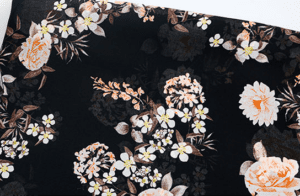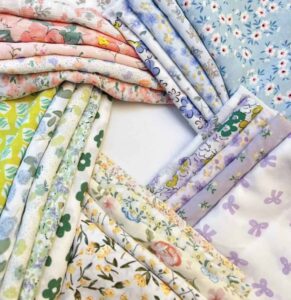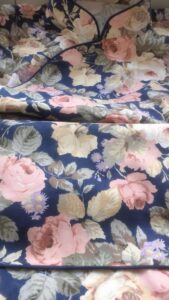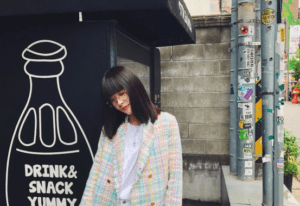
Generally speaking, designers who will ask this question usually have little experience, of course, once Mr. F also had this confusion: should we design the style first and then find the right fabric, or should we first find the fabric to be made and then find the right style to do?
In my opinion, there are two kinds of situations, one is the development of brand/quick reaction, and the other is the development of wholesale/label.
Fabric first and then style approach
1. Branding model.
Take a medium-sized brand clothing company as an example, every quarter to develop new products will do a detailed product planning, and the product planning includes the fabric application planning.
The operation of mature brand companies, one is a long-term cooperation with fabric suppliers, quarterly development of the front material suppliers will provide the next season of fabric samples and color cards, and brand companies in order to reflect the brand gene, and the next season of new brand story, to improve the recognition of the product story, there will be a lot of customized fabric color and pattern, especially customized with patterned fabrics.
Therefore, it is not feasible to have the style first and then find the fabric.
In the process of product development, brand companies also follow the same way of developing fabrics before styles. In the planning of planning, each wave, down to each hanging rod, there is fabric planning.
Some brand designers have asked me: our company is a brand company, but the director gives us a relatively rough fabric planning, what specific fabrics to use, or wait for us to come out with models, and then go to the fabric market to find back to choose.
I can only tell you that such a situation is either a problem at the higher level or a problem of work execution. A real brand will not even act hastily in fabric planning.
What is the most important thing for brand clothing?
It’s the fabric!
The fabric itself includes all the important components such as color, pattern and pattern, and usually a fabric will extend to different categories of styles.
In addition to the pioneering trendy brand, most of the brand clothing style changes are not so big, mainly in the match, the overall shape, color combination, fabric integration on the article.
(Of course, now the brand diversification, segmentation trend is more and more obvious, there is not to put the fabric first, but from the perspective of product development from the fabric is easier to operate)
2. quick-reverse mode.
First of all, the preparation of fabric is the basis of quick counter design. 7 days or 15 days of quick counter must be built on the basis of basic surface material to warehouse preparation.
It is unprofessional to think that the fabric production cycle can be compressed infinitely, or that you can completely replace the fixed spinning fabric with the spot fabric to meet the demand of brand fast opposing fabric.
No matter from the quality risk or business risk, the preparation of material is one of the most core elements of fast anti-production.
Then, “one material variety” can make the best use of fabric reserve.
The principle of quick-reverse is based on pull supply and fast update. The pull supply is based on sales data, and there must be instability and error in prediction.
If we realize a variety of materials, for example, Z fabrics develop three models of ABC at the same time, if A models sell well and BC models lag, Z fabrics can quickly supply A models for processing and production, then the economic risk caused by guessing errors is greatly reduced, and the planning inventory of garments or fabrics is effectively reduced.
So that, the fast-reverse development mode, must be set first fabric.
Having the style first and then the fabric
While the wholesale or labeling model of product development is different, wholesale is suitable to have the model first, why?
Firstly, Timeliness of wholesale.
As we all know, wholesale products attach the most importance to time, a sample garment from the design to the big goods into the stall time is not by quarter, not by month and by week, but by day, or even by hour. As you know, what usually affects the boarding cycle and production cycle the most? It’s the lack of large quantities of fabrics planned for production!
Again, from the fabric.
Wholesale is not possible to wait for a month or even months to customize hundreds of thousands of meters of fabric, as in the case of brand operations. More often than not with the market spot, and spot fabrics, businesses are generally prepared for a certain number of customers almost finished goods, and then add a single production, which inevitably often appear to order the fabric out of stock.
Therefore, the only way to ensure the flexibility of development and production is to come up with the style first, and then set the fabric.
Finally, from the design and development of this aspect.
We should know that the wholesale products, generally single product category development. Of course, now many wholesale design also focus on the whole category combination series with. But the essence of the implementation of the depth of a single paragraph, which determines the fabric is not a prerequisite factor, but the style.
First, there is a single class style, and then use different fabrics, to ensure the richness of the single class style (single class of things without the fabric extension is difficult to make depth)
There is another model is labeling.
The way of label development, although many companies now take the brand route on the surface, such as full category development, focus on series and collocation, etc., but the essence is still the same as the wholesale development, but also take the depth of single category style.
Summing up.
Of course, nothing is stereotyped, but also can be changed according to the specific circumstances, for example, although you do brand, selected a lot of reference samples of the style is very good, these must be referred to or extended out, this time there is no need to stick to the stereotypes first set the fabric, since there is a style, go directly to find the fabric set out it.
For example, if you are doing wholesale, you have a few pieces of fabric in your hand with very good fashion sense, high cost performance, and confirmed that there is still stock (there are reliable fabric merchant resources on hand), don’t hesitate at this time, go directly to the fabric to find the style extension.
























